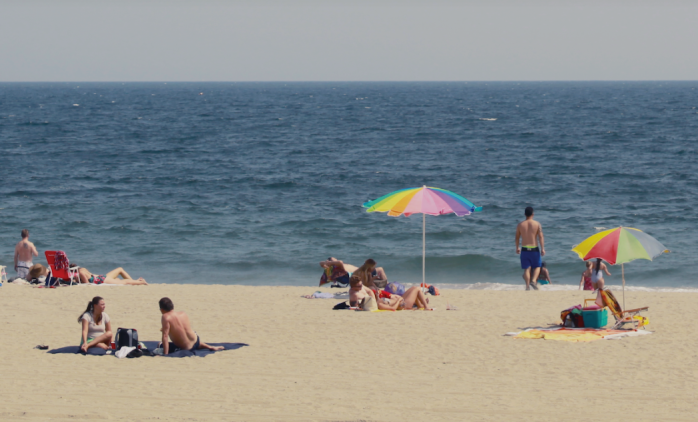BY TRACY M. LENTZ
Affordable Cremation Service of New York
In 2008 the cremation rate in NY was 33 percent, that number is expected to double in the next two decades.
Cremation Information Methods and Locations
Cremation Scattering: As long as it is permitted by local regulations, you may have a scattering ceremony in a place that is meaningful to you. Some people may find it hard to simply pour the mortal remains of a loved one out onto the ground or into the sea. If you wish to be scattered somewhere, it is therefore important to discuss your wishes ahead of time with the person or persons who will actually have to do the scattering ceremony, as they might want to let your funeral professional assist in the scattering ceremony. Funeral directors can also be very helpful in creating a meaningful and personal scattering ceremony that they will customize to fit your families specific desires. The services can be as formal or informal as you like. Services can also be public or private.
Learn how to Create Meaningful Scattering Ceremonies: Another difficulty with cremation scattering can occur when the remains are disposed of in an anonymous, unmarked or public place. Access to the area may be restricted for some reason in the future, undeveloped land may be developed, or any of a host of other conditions may arise that could make it difficult for your survivors to visit the site to remember you. What if your survivors relocate sometime in the future? Once scattered, cremated remains cannot easily be collected back up. So give thought and discuss specific desires on where the scattering ceremony will take place.
Cremation Scattering Questions
Where should I scatter? As with cremation, when it comes to scattering there are many options. If the location is on private property you should seek permission of the owner. If it is on public land you should check local regulations. Many choose a place that is close to home like in the garden or flowerbeds, or perhaps around a favorite tree or bush. Some even choose to scatter off the deck or by the patio. A farmer might be plowed into their field and a memorial placed at the fields edge. These places are popular because by the home is convenient and it is easy to establish a memorial on your property. A place that held special meaning to the deceased is a popular choice. This might be a place of recreation like, the golf course, hunting grounds, fishing hole, a hiking trail, a mountain or ski trail. There is no limit. Remember the phrase, “home is where the heart is”. Many consider scattering to be more natural and it gives us a sense of freedom and oneness with nature. This is probably why outdoor settings of natural beauty are often desired. Over bodies of water has been a favorite, keeping in mind the concept that all life began in the sea. It is the sea in which we came, and eventually, life flows back to the sea. Many see scattering over water or water burial as the fastest route to the greatest dispersal. If to be spread far and wide is the goal, then the sea is appropriate.
Cremation Scattering Methods and Locations
Casting: is the act of simply tossing the ashes to the wind. Usually done by one individual while others look on. Care and consideration of others should be used when casting. Check the direction of the wind and cast down wind. The ashes are mostly made up of a dense sand like matter and will quickly fall to the ground but some of it will be a fine powder and this will become airborne forming a whitish grey cloud.
Trenching: This is done on land when a shallow trench or groove is dug in the soil. A hoe works well. Then the trench is filled from the scattering urn and usually racked over at the conclusion of the ceremony. You can get creative and dig the persons name in the soil, maybe inside a heart, then fill the void with the ashes.
Ringing: This is when we form a ring on the ground around an object or even a group of objects, it can be with or without a trench. The scattering urn will need to be held close to the ground when pouring the ring.
Raking: The ashes are poured from the scattering urn evenly on loose soil and raked into the ground, at the conclusion of the scattering ceremony. This is often how it is done in the scattering gardens that are now located in many cemeteries.
Cremation Green Burial: A hole is made in the soil and the ashes can either be poured in or a biodegradable scattering urn can be placed in and covered. Many cemeteries will let you scatter on the gravesite as long as the remains are buried. If the cemetery requires an urn, the biodegradable style is often permitted. Multiple scatterings or green burial can be done on one grave even if a casket has been buried the ashes can go on top. As with any scattering, it is important to establish a permanent memorial so survivors have a place to continue remember and heal in the years to come.
Water scattering: When scattering over a body of water a water-soluble urn can enhance the experience. These urns are specifically designed to gradually disperse the ashes back to the sea. Ashes can be cast directly into the water, but will often blow back at the boat and cling to the sides of the boat. This can be both frustrating and unsightly. A water-soluble urn will usually float for several minutes then slowly sink where it will degrade or melt back to the sea. The survivors will often toss flowers or petals as a final tribute as the urn slowly drifts away.
Aerial scattering: Usually done by professionals, this is done when the ashes are cast from a private plane. See the resources section of this website for Arial scattering providers in your area. Some of them will coordinate with your ceremony to fly over and cast the ashes at a specified place and time. On clear days a cloud of ash can be seen from the ground.
For additional information, please contact Tracy M. Lentz, head cremation specialist at 516-546-4626. She is a licensed funeral director from Affordable Cremation Services of NY who specializes in cremation services.
































